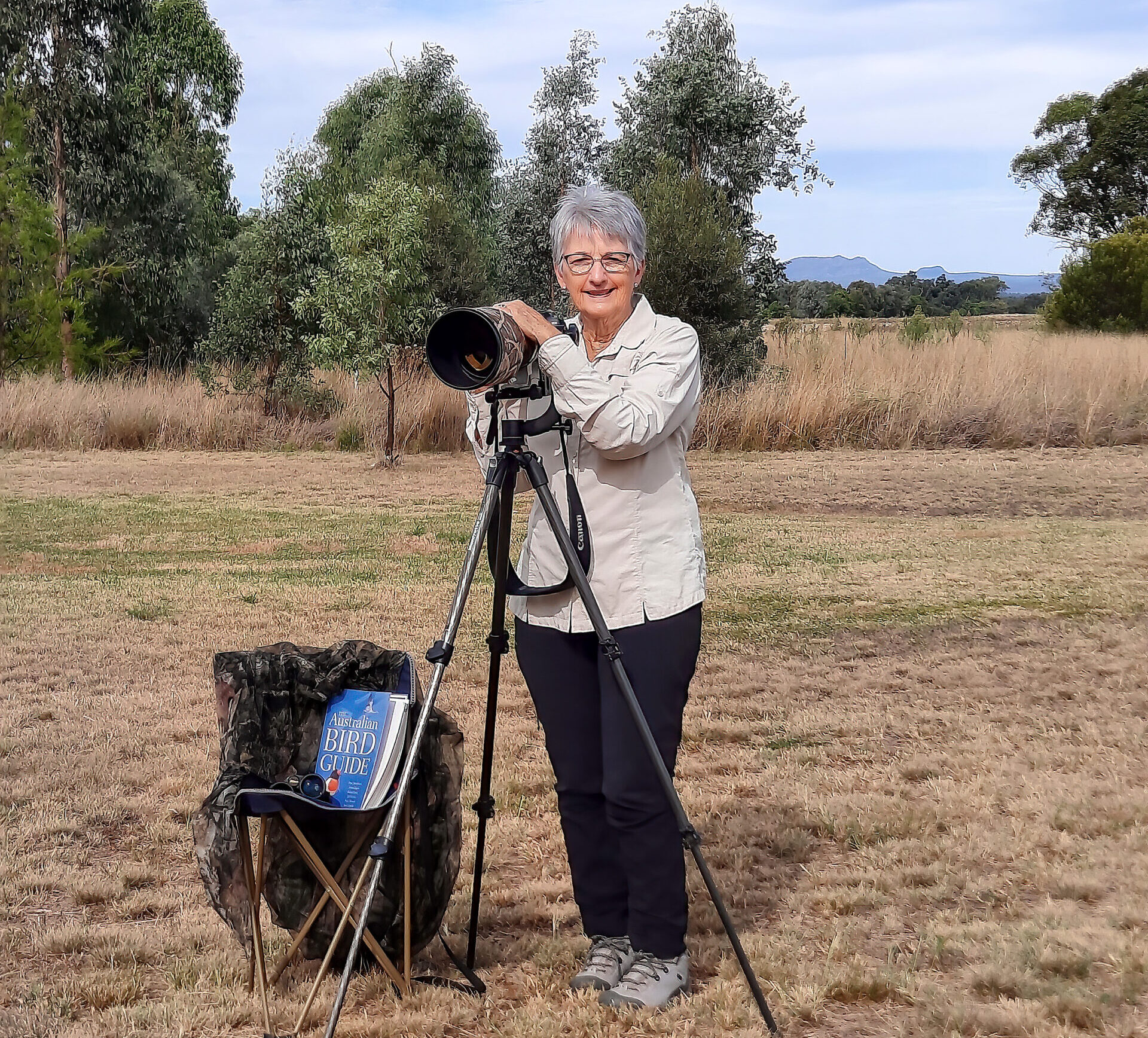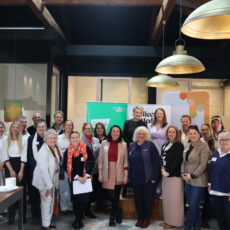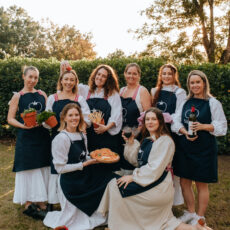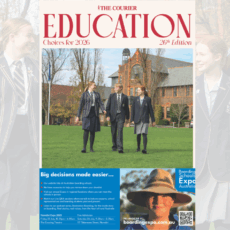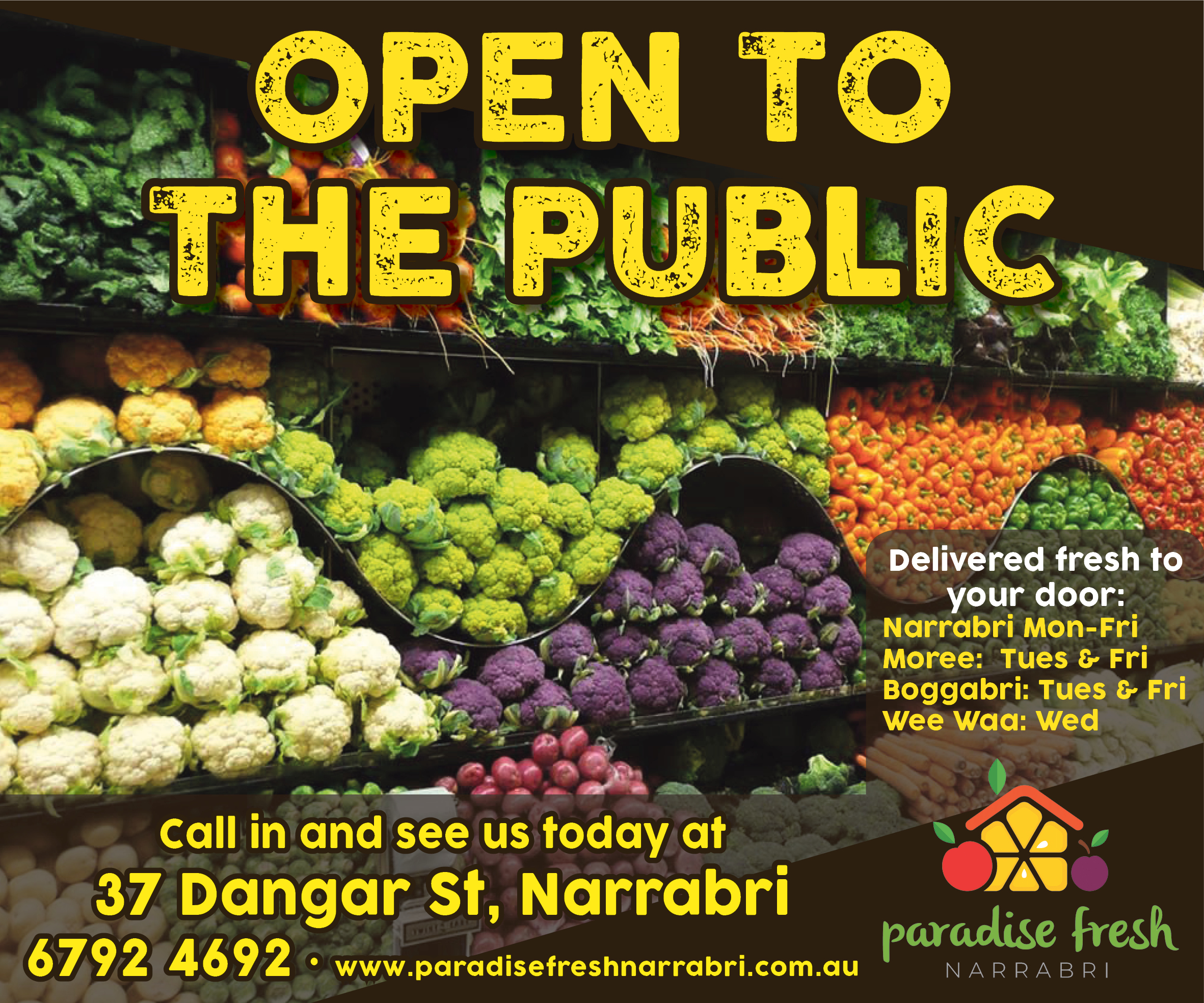Narrabri’s Mary Wheeler captures the remarkable movements of Australian native birds through the lens as a photographer who can only be described as having the patience of a saint.
Hours and hours, from anywhere between dawn and dusk is what it often takes to capture breathtaking images of our vibrant and majestic Australian bird friends of all sizes, just “being themselves,” and playing in their natural habitats.
In 2022, Mary became the first woman to win the prestigious BirdLife Photography Member of the Year award, which recognises the outstanding contribution of work from a Birdlife member photographer.
The honour was a big one for Mary who still considers photography to be a male-dominated field.
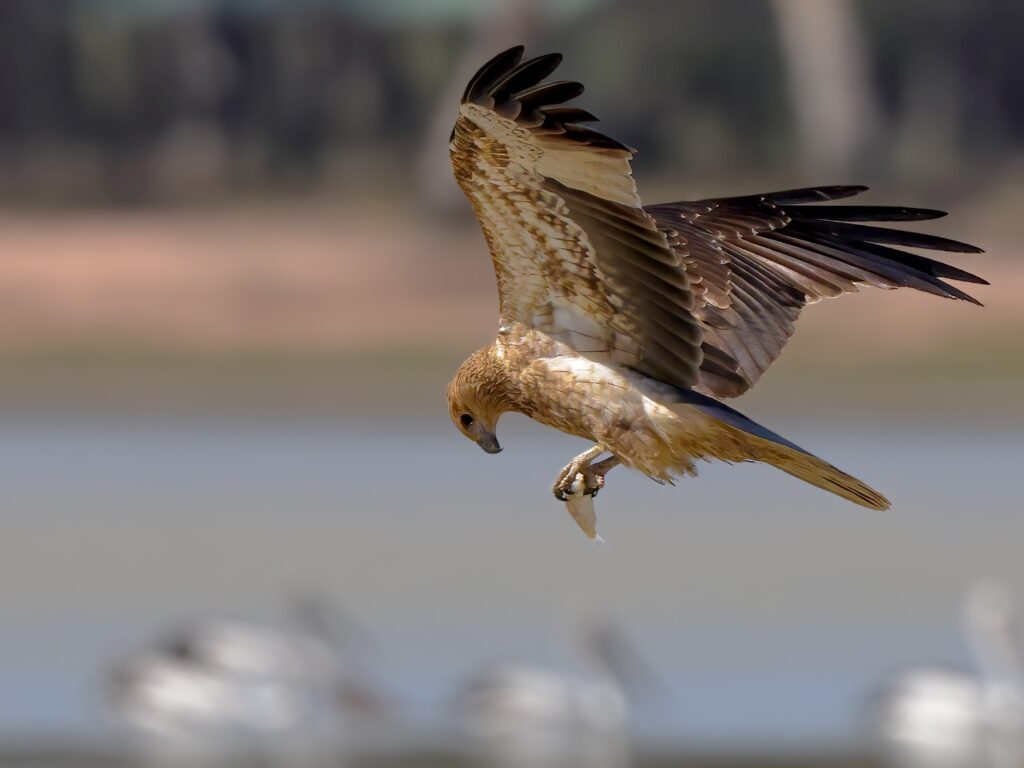
This water level in the lake is dropping and the fish are being targeted by the birds. This whistling kite had just caught a small fish.
As a member serving for three years on the BirdLife Photography committee, Mary has acted as treasurer and uploaded an impressive 37 images to the photography website.
The nationwide group is 12,000 members strong, and provides a forum of resources for photographers, bird observers, and the public, to enhance their knowledge and appreciation of birds through photography.
The same year she took out the member award, Mary also won the gold medal for the Best Photographer of the Year Competition, which is open to all photographers, when she won the advanced level in four themed categories: fast and small, little birds, honeyeaters, and monochrome.
Mary initially started participating in the competition at a beginner level, working her way up each year, until she took out the gold in the advanced competition,
It’s hard to believe that she has only been pursuing photography for the past 10 years.
“I was completely hopeless when I started in 2014, but I had many mentorships,” said Mary.
“The competitions are great; they give you an interest and challenge – a focus.”
Mary certainly has a gift, her photos could be described as nature’s artworks, vividly portraying the songs of the songlarks, the exquisite chatter of the budgerigar, and the mating rituals of the brown falcon in a series which she humorously terms “bird voyeurism”.
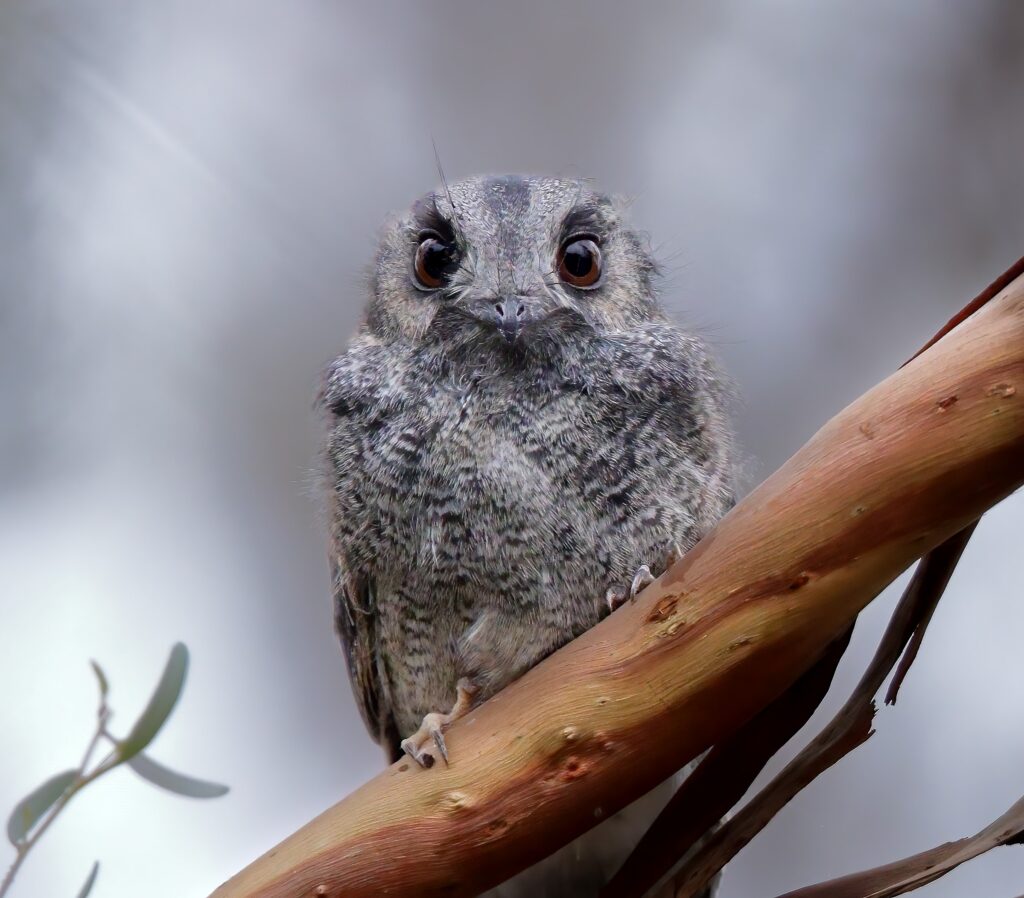
Australian owlet nightjar.
The BirdLife Photography awards focus on native species and sees up to 6000 entries from all over Australia, every year.
Over five years, the competition’s entries have contributed over $90,000 to Birdlife Australia projects in bird conservation.
For the last two years, $25,000 of the funds have gone to the ‘Birds on Farms’ project, contributing to the improvement of the woodlands in central west NSW each year.
“The project is close to my heart and it’s so important that we encourage farmers to look after habitat on their property,” said Mary.
“And we’re able to donate that money because we don’t need it, we’re a group of photographers out there – and we give it back to Australian birdlife and the environment, so it’s quite special.”
The funds help with fencing off habitats, education, or conducting land surveys to increase the biodiversity and number of birds on farms.
Last year, the committee also donated $25,000 to a research scientist in Queensland, to help her efforts to train indigenous rangers to help protect the habitats of the critically endangered bushstone and beachstone curlews.
Mary’s many birdwatching adventures are accompanied by her husband Innes, who’s gotten very good at spotting feathered friends in their natural habitat.
The two have formed a great partnership, often venturing out together, taking morning tea, and sitting down at the water hole and watching the birds.
One of the pair’s most special scouting’s was photographing the Swift Parrots’ arrival in Coonabarabran.
The rare critically endangered bird doesn’t normally come this far north or west, and luckily, a keen birdwatcher who also works at Pilliga Pottery spotted them in the area and quickly relayed the hot tip back to the Pilliga Forest Birdwatchers group.
The parrots had come from Tasmania, taking their winter flight across the Bass Strait.
Normally they can be witnessed around the Murray River in Victoria, but that year, changed course and came to the Pilliga.
Mary and Innes ventured out at 7.30 am, on a particularly frosty and snowy morning to witness the spectacular sight.
Then there was the time they caught sight of the even rarer Australian painted snipe, of which there are less than 300 left in the wild.
The two travelled west of the Gwydir wetlands, by Mungindi, where a lot of rain and water had come through.
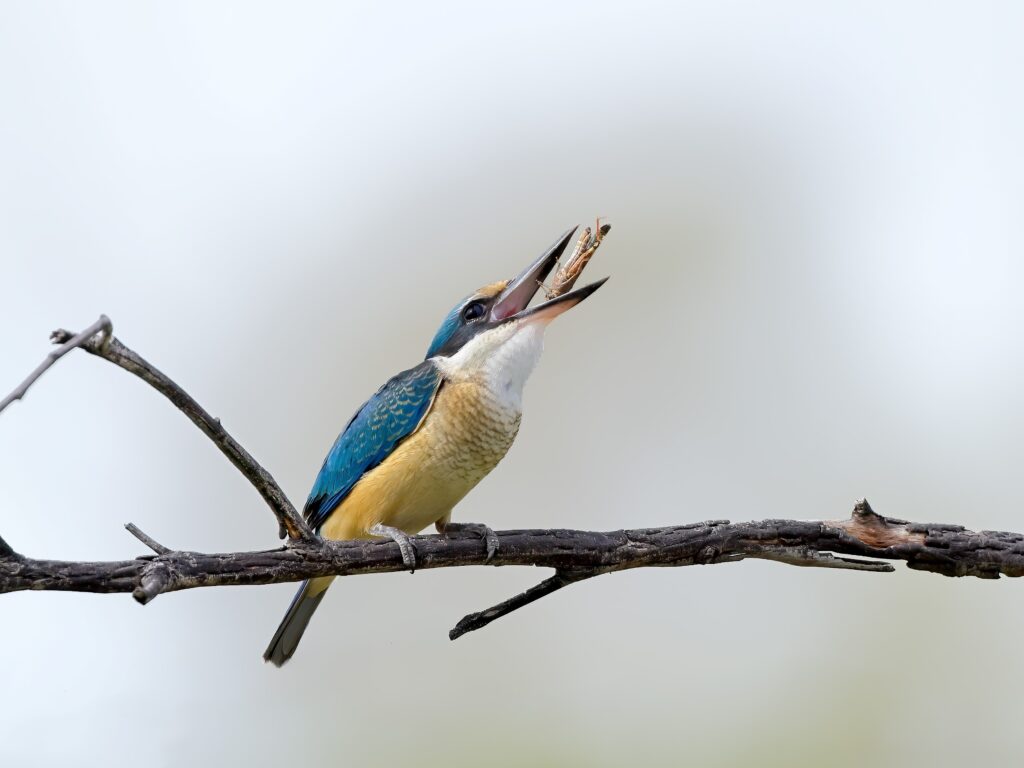
Sacred kingfisher that was feasting on grasshoppers during the grasshopper plague in 2021.
“We knew we had to go and see them because we would never get the opportunity again, reports were that there were 25 of them,” said Mary.
“We were there from 5am until 7pm that night as they only come out early hours or at dusk.
“We arrived too late in the morning, so we stayed until 7pm, and there they were at the back of a cotton field feeding in mud on the shallow water.
“The avid birdwatchers didn’t get home until 9pm that night, and while they were proud of their dedication, vowed never to do that again.”
“That was dedication, we saw nine of them and it sent shivers up your spine, to see such a rare bird in the environment was amazing,” said Mary.
“I’m a bit of a birdy nerdy.”
Mary’s passion for birds grew after visiting the Broome Bird Observatory, where she took her little point-and-shoot camera out for a test run.
“When you start, you start thinking – this camera’s not big enough I need to get a bigger one, then you get a bigger one and a bigger one.
“It’s a bit like golf, but better. Bit like any sport – like golf, but it’s better,” laughs Mary.
Right now, she’s using a magnificent Canon R5 mirrorless camera 300ml prime lens with a 2x converter.
Her tactics for capturing the best birdy moments are to sit somewhere near a waterhole – or in her bird hide in the backyard and wait.

Mary Wheeler said she was sitting on the edge of the lake taking a few images of the magpie geese when she noticed some activity between a few of the birds, and was saddened to see what the commotion was about. The birds were fighting over the remains of a plastic water bottle. Plastic pollution is becoming an ever increasing problem in urban wetlands posing a severe threat to birdlife and the delicate ecosystems they inhabit. As urbanisation progresses, these once-pristine habitats are increasingly affected by human activities, leading to the introduction of plastic waste and its detrimental consequences for bird species. This image of a female bird with her ‘prize’, typifies the problem that is plastic pollution.
“What does it take to take a good photo? – patience, and learning about the bird’s behaviour,” said Mary.
“I set up a makeshift bird hide with a little camo net around it, and I put my gear in there and put my lenses outside and I know what time the birds are going to come home.
“Then I sit quietly and have patience.
“If you don’t have patience, you may as well not be a bird photographer as far as I’m concerned.
“And you just have to let them just do their thing – and that’s when you get an amazing photo – just when they are being themselves and you are sitting back and enjoying it.”
Mary very recently attended the Birdlife Photography Conference in Hahndorf, Adelaide where this year’s keynote speaker was world-renowned South African photographer, Richard Flack.
To order photos from this page click here

